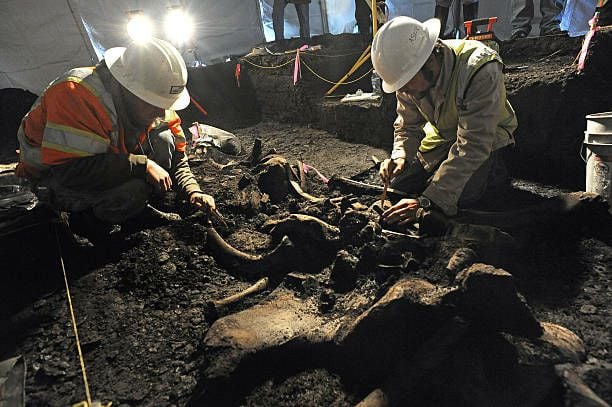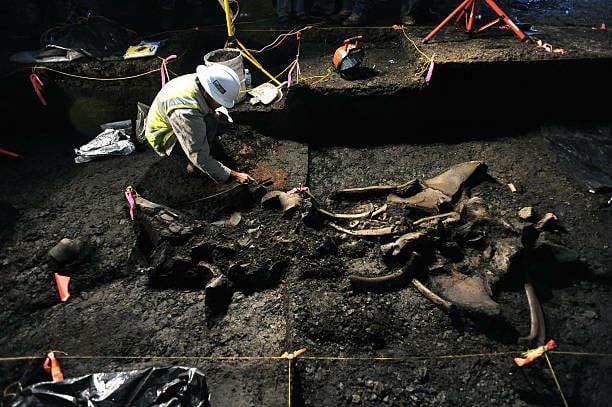In a remote area near Snowmass Village, two graduate students in archaeology, Cody Newton from the University of Colorado at Boulder and Brendon Asher from the University of Kansas, embarked on an extraordinary excavation at the Ziegler Reservoir. This work quickly became one of the most significant finds in North America, with the potential to rewrite our understanding of prehistoric life on the continent. The focal point of their attention was the carefully preserved skeleton of a young female mammoth, around 18-20 years old. Newton and Asher worked meticulously, gently brushing the bones to reveal the pelvis, ribs, leg bones, and the magnificent tusks of this ancient creature. This remarkable find alone was enough to captivate archaeologists and paleontologists alike, but it was just the tip of the iceberg.

The excavation site, located in a layer of peat submerged under 7-8 feet of water and 3-5 feet of clay, yielded an astonishing array of fossils. The peat bog provided a perfect environment for the preservation of ancient remains, leading to the discovery of bison skeletons as large as SUVs and mastodons the size of buses. However, what truly set this site apart was the evidence of an extended span of time during which these animals perished and were preserved.

The experts were thrilled at the prospect that this “killing field,” as it came to be known, had attracted and preserved a diverse range of animal bones over an exceptionally long continuum of geological time. This suggested that the site might be one of the most important archaeological discoveries ever made in North America.

The implications for our understanding of the region’s ancient ecosystems and the creatures that roamed it were immense. The initial mammoth discovery was made by Jesse Steele, a bulldozer operator from Gould Construction, on October 14. While pushing up dirt during the reservoir’s enlargement process, Steele noticed the spine of a juvenile Columbian mammoth protruding from the ground. He did not realize that this chance find would lead to a treasure trove of ancient wonders.

What made this discovery even more significant was the fact that Snowmass was the first site in Colorado to yield both mammoth and mastodon fossils. It appeared that there might even be complete skeletons of both species, providing valuable insights into the fauna of the region during the last Ice Age.
As the excavation at the Ziegler Reservoir neared completion, scientists and researchers eagerly awaited further analysis of the recovered fossils. The information gleaned from this remarkable find had the potential to reshape our understanding of the ancient past and shed light on the complex interactions between prehistoric animals and their environment. Cody Newton, Brendon Asher, and the entire team involved in this excavation truly unearthed a treasure trove of knowledge and set the stage for future archaeological breakthroughs in North America.

Ultimately, they demonstrated that patience and passion in research could lead to great discoveries, opening new chapters about the ancient world we had never known. These fossils were not just remnants of the past but doors to deeper insights into life and evolution on Earth. Through this story, it became clear that the work of archaeologists is not merely about digging up rocks and dirt but uncovering mysteries buried for millions of years.




